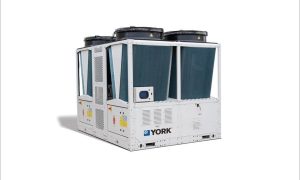Sandeep Gupta, Vice President & Managing Director of Copeland India, highlights the HVACR industry’s expansion fuelled by energy efficiency, smart technologies, and environmental initiatives. He emphasizes a shift towards refrigerants with lower global warming potential (GWP) to mitigate the environmental impact of rising demands for cooling and refrigeration.
What is your perception about the current HVAC&R industry?
India’s HVACR industry is evolving rapidly, driven by critical factors such as energy efficiency requirements, smart technologies, market expansion, and green initiatives. These advancements in the commercial and industrial categories are beneficial and crucial in our journey toward carbon neutrality while reducing operational costs.
As India is committed to achieving its carbon neutrality by 2070, the HVACR industry will be a key contributor to reducing the nation’s carbon footprint driven by effective climate solutions. Copeland, a long-standing pioneer in the HVAC and refrigeration industries, is strategically positioned to improve the efficiency of heating and cooling solutions with its expertise in sustainable climate solutions.
How is Copeland driving growth and innovation in HVACR, cold chain, and industrial compression sectors post-separation from Emerson?
Since its separation from Emerson in May 2023, Copeland has embarked on an ambitious journey focused on innovation and sustainability in the HVACR, cold chain, and industrial compression sectors. Copeland is committed to driving growth and technological advancement in heating and cooling solutions as a standalone business. Our growth plan is centred around our commitment to sustainability and innovation, which allows us to scale operations, innovate, and adapt rapidly.
How do you use technology to improve its offerings and customer experience in the Indian market?
Copeland’s mission is to harness state-of-the-art technology to offer superior climate solutions. We leverage new-age tech and analytics at our research and development facilities in India to enhance our offerings and customer experience. Additionally, we are transitioning to lower global warming potential (GWP) refrigerants, addressing the environmental impact of increased demand for cooling and refrigeration.
How does Copeland leverage its operations in India to advance sustainable solutions in the HVACR and cold chain sectors?
Sustainability is fundamental to Copeland’s operations and product offerings. Leveraging our global manufacturing footprint in India and industry expertise, we innovate and deliver solutions promoting lower-GWP refrigerants. Our compression technology facilitates sustainable heat pump alternatives for traditional systems.
Our Karad Engineering Laboratory is a dedicated facility that advances compressor system testing in reliability, performance, and energy efficiency. Moreover, our Chakan Cold Chain & Distribution Centre and Atit Plant are world-class manufacturing sites with a team of dedicated engineers, delivering a solid supply of sustainable solutions. These initiatives testify to our commitment to a sustainable future as we strive to meet customer needs and address climate challenges across HVACR and cold chain sectors.
How is the company meeting India’s growing demand for cold chain technologies?
One of Copeland’s key focus areas is advancing cold chain technologies globally and in India. Given India’s size, preserving critical perishable goods like food and medicine is even more crucial for combating food insecurity and waste amid population growth.
Copeland’s sophisticated temperature management and monitoring systems are game-changers in modern cold chain logistics. Copeland’s tracking solutions also enhance traceability and compliance with evolving regulations, ensuring reliable cold chain management in India’s growing market.

How is Copeland India strategically aligning its efforts with government programs?
As vice president and managing director of Copeland India, I lead a team of dedicated experts in strategic initiatives to address the region’s growing demand for HVACR solutions and cold chain technologies. We are working to reinforce Copeland’s leadership in India through strategic R&D initiatives with a team of dedicated engineers and analysts,
Additionally, we are aligning our initiatives with government programs like the Smart Cities Mission and Digital India, integrating smart and IoT-enabled HVAC systems to enhance energy efficiency and operational reliability. Copeland continues to contribute to the country’s sustainable growth and development by staying ahead of technological advancements and regulatory changes.
What are the primary goals and strategies for growth in India in the near future?
Copeland’s strategy focuses on leading the HVACR industry by providing sustainable climate solutions that improve energy efficiency and air quality. Our advanced, energy-efficient systems are essential for the rapidly urbanizing country, meeting the needs of the commercial, residential, and industrial sectors.
We are committed to meeting India’s increasing demand for reliable traceability and precise temperature control, driven by e-commerce and quick commerce. These efforts align with the government’s India Cooling Action Plan, which fosters a conducive environment for technological advancements and sustainable practices. Aligning with these initiatives, Copeland aims to expand its footprint and strengthen its market presence in India, contributing to the country’s sustainable development goals.
Cookie Consent
We use cookies to personalize your experience. By continuing to visit this website you agree to our Terms & Conditions, Privacy Policy and Cookie Policy.














